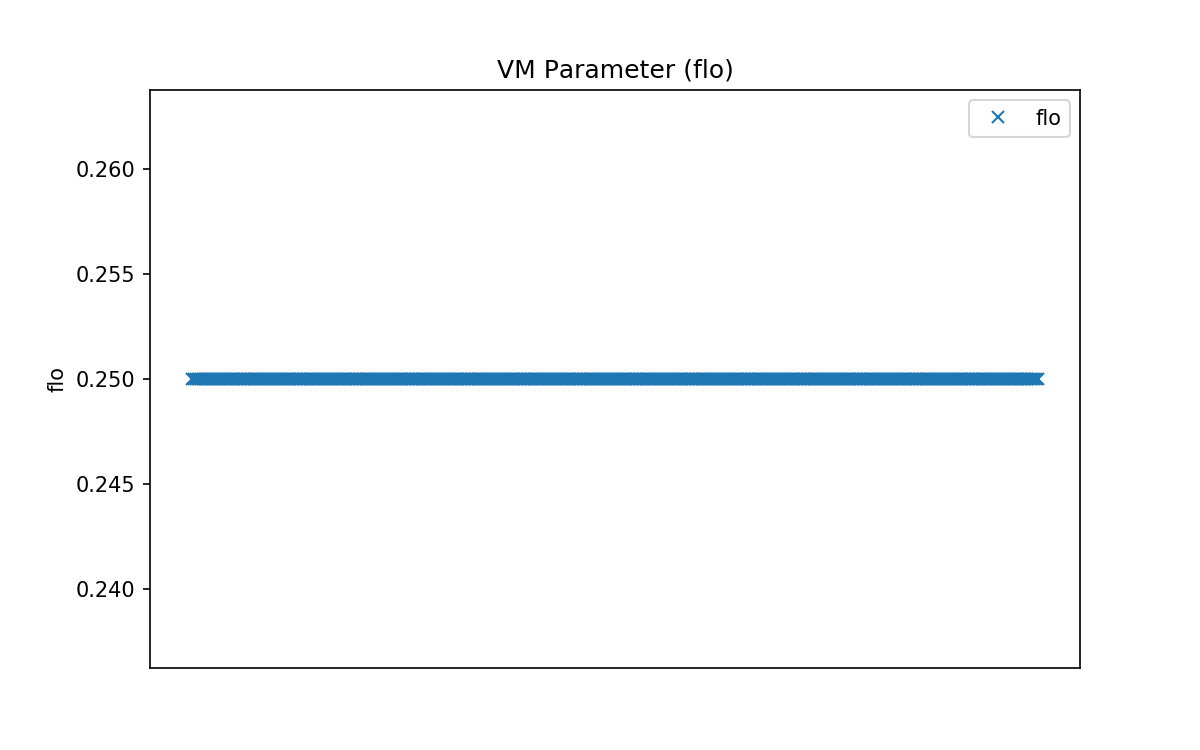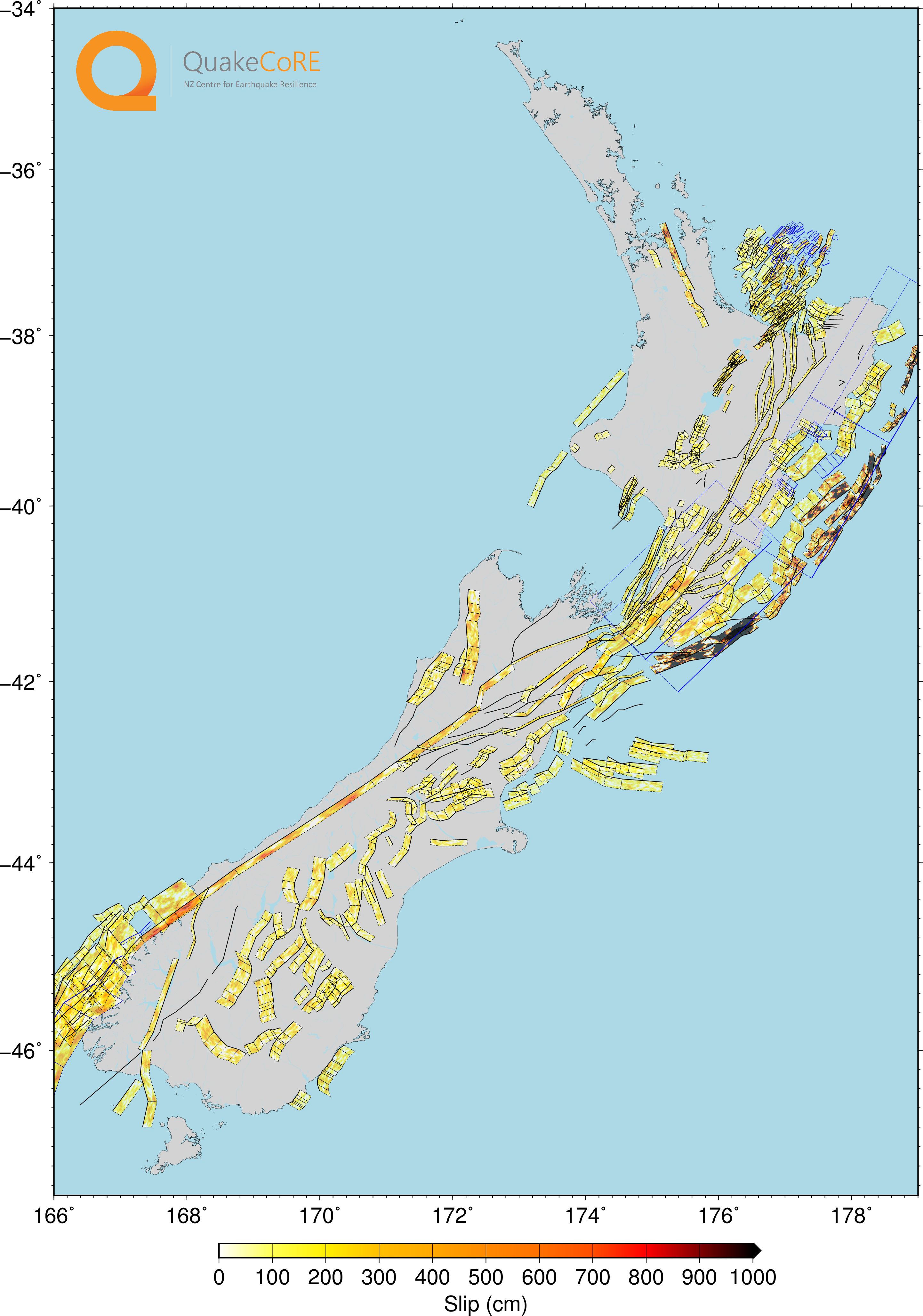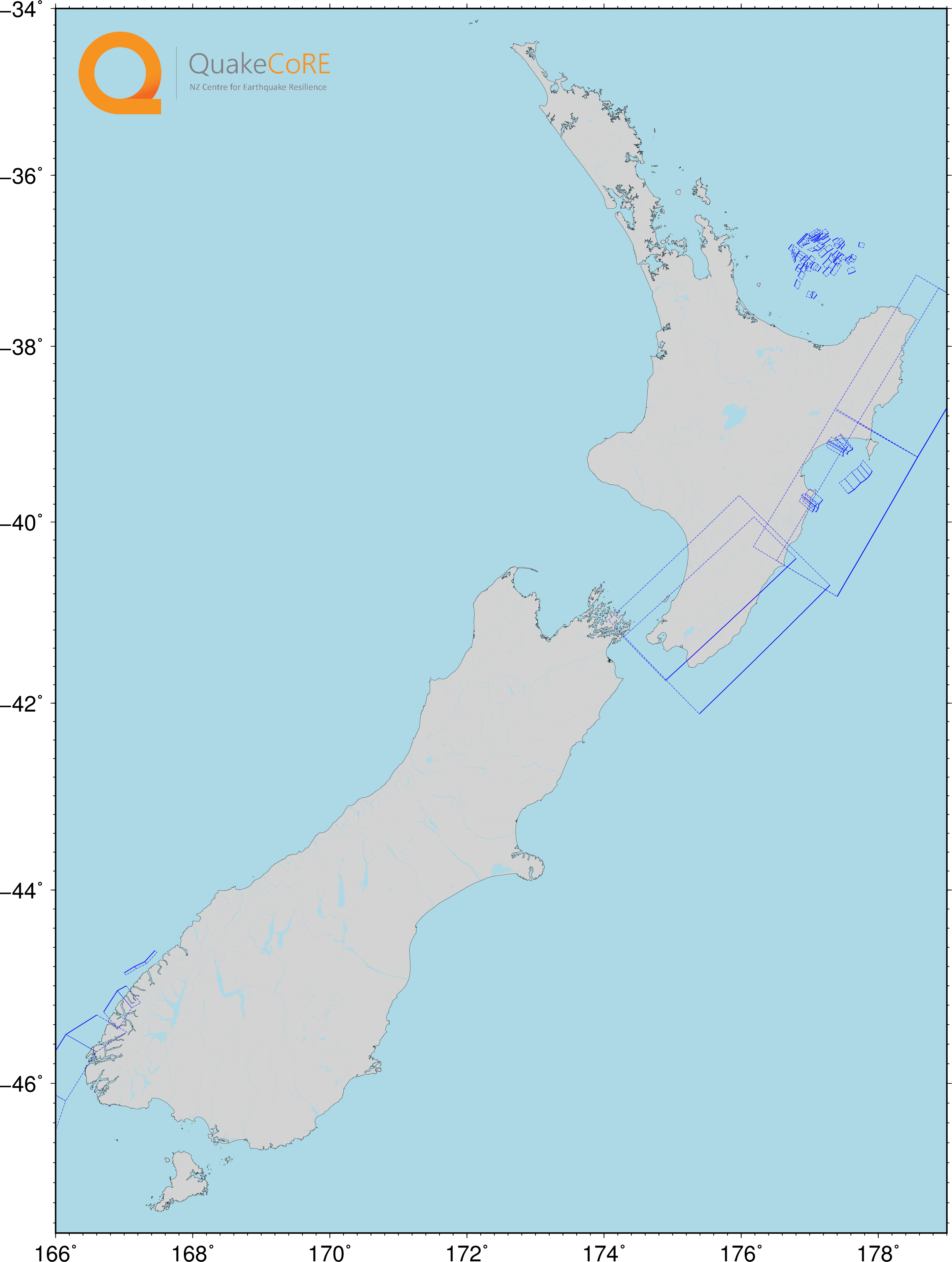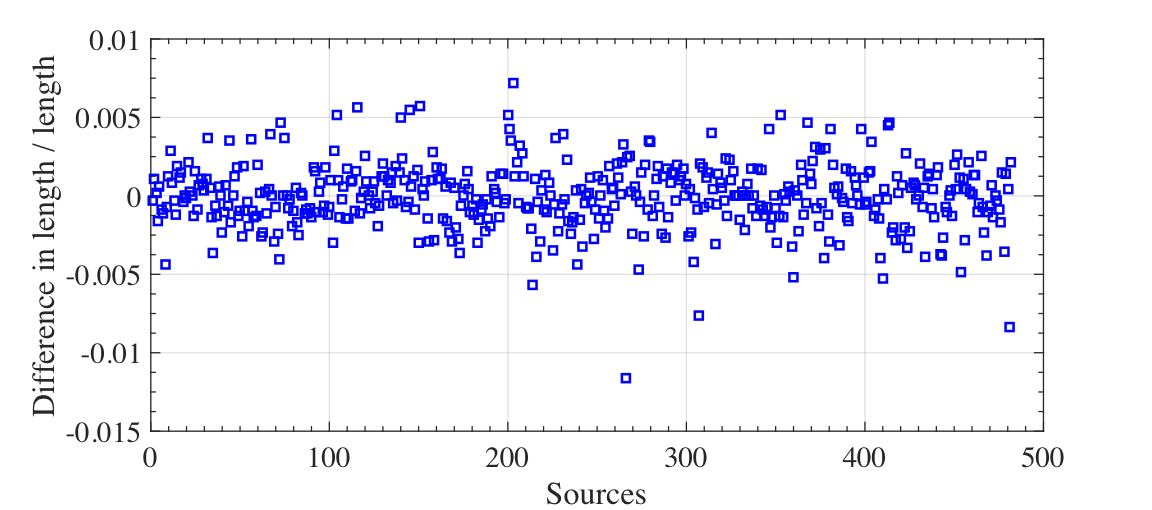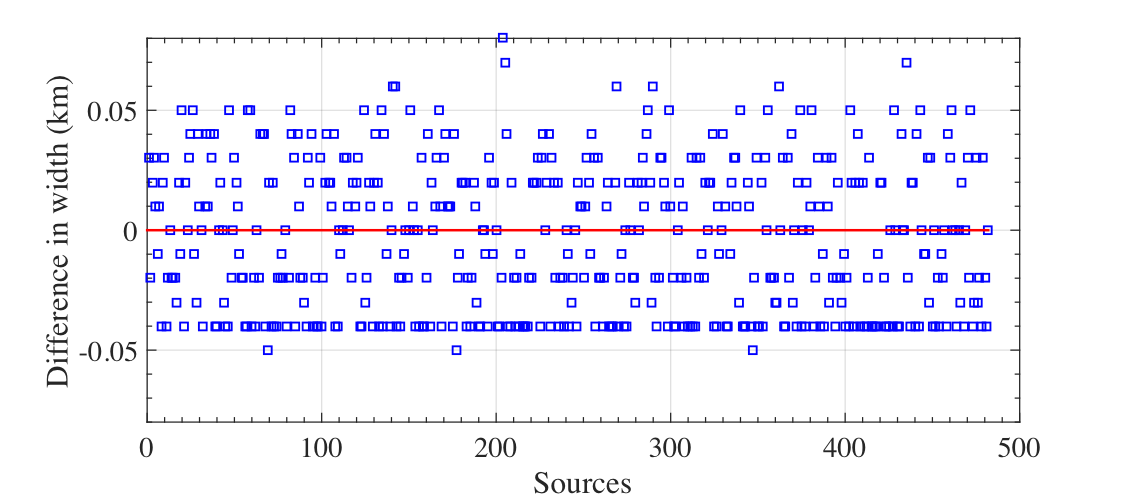Rupture
1. Magnitude of ruptures
Test: Extract Mw for all ruptures from
SRF.info, plot them versus area (i.e. Mw vs Area) and compare them with scaling relationships (e.g. the Leonard relationship (2011- Table 6)). Data should be colored based on the tectonic type (which indicates which scaling relationship should be used)
Pass criterion:
Not passed yet. 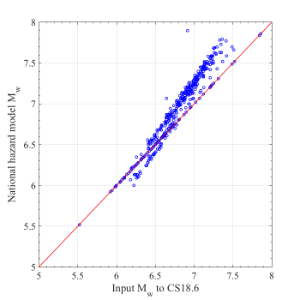 | 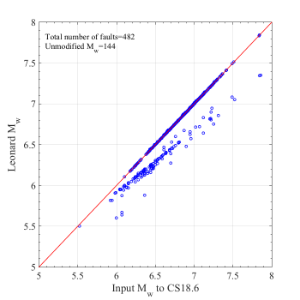 |
|---|
By using Leonard, we get smaller Mw with respect to MW from NHM for most of the faults, but not all. Those points below the red line are coming from faults that they have small length but go down to seismogenic depth of 12 km. We increase the seismogenic depth to 15 for them, and this results in a larger Mw from Leonard, compared to Mw from NHM (which is calculated based on Stirling). The figure below is presented to visually explain this. 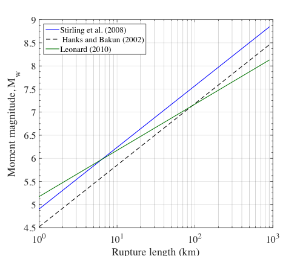
| Due to the mistake in the python code, the X-axis value of 144 points are larger than what it should have been. |
Rupture magnitude test from verification code:

2. Number of rupture realizations per source

3. Lower Seismogenic depth

4. Spatial distribution of sources across NZ
Note: Sources that are excluded appear in blue
5. Spatial distribution of sources across NZ based on the tectonic type


6. Statistical properties of hypocentre locations
Examples of random hypocentre location realizations (along the strike and dip directions), in comparison with the theoretical distirbtuions used.



P-values of KS test conducted to compare the empirical and theoretical hypocenter distributions:
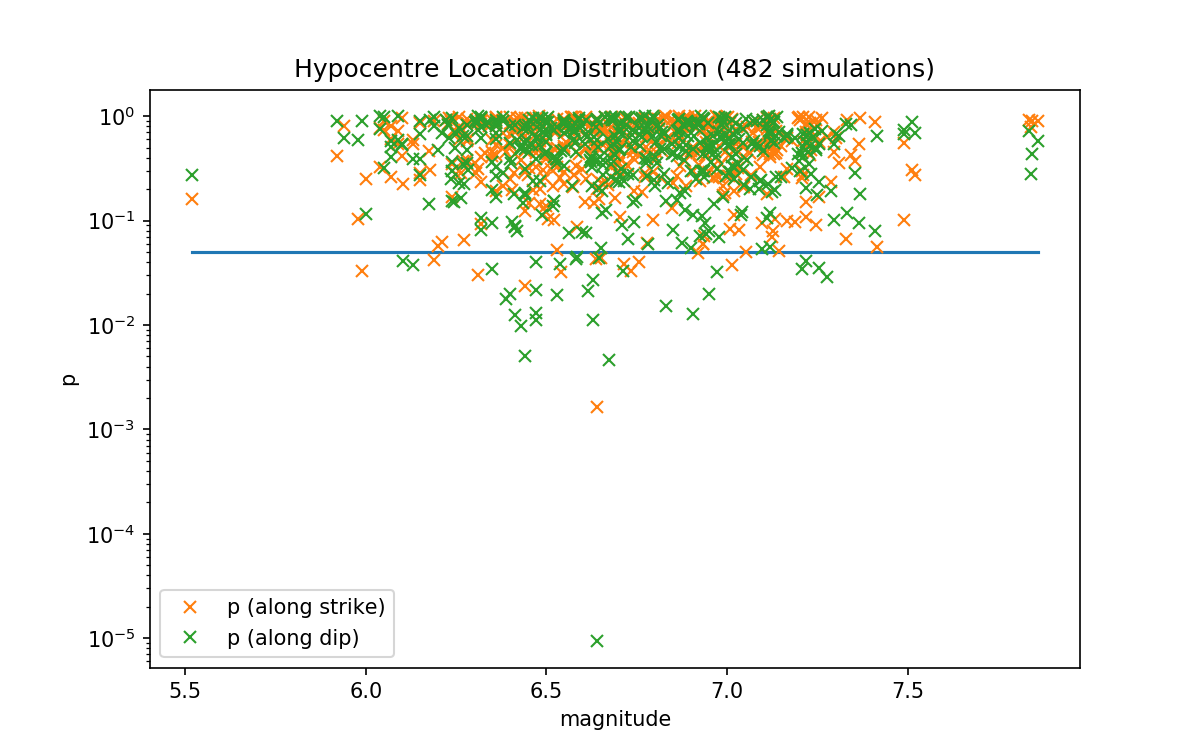
Histograms of the above p-values:


7. The difference between (NSTRK * subfault_size) and LEN; and (NDIP * subfault_size) with WID
Velocity model:
1. Velocity model domains viewed spatially
| North Island | South Island | NZ |
 |  |  |
|---|
2. Core hour estimate as a function of the magnitude of simulation
| Number of realizations and core-hours for considered source | Comparison between number of realizations for CS18p5 and 18p6 | |
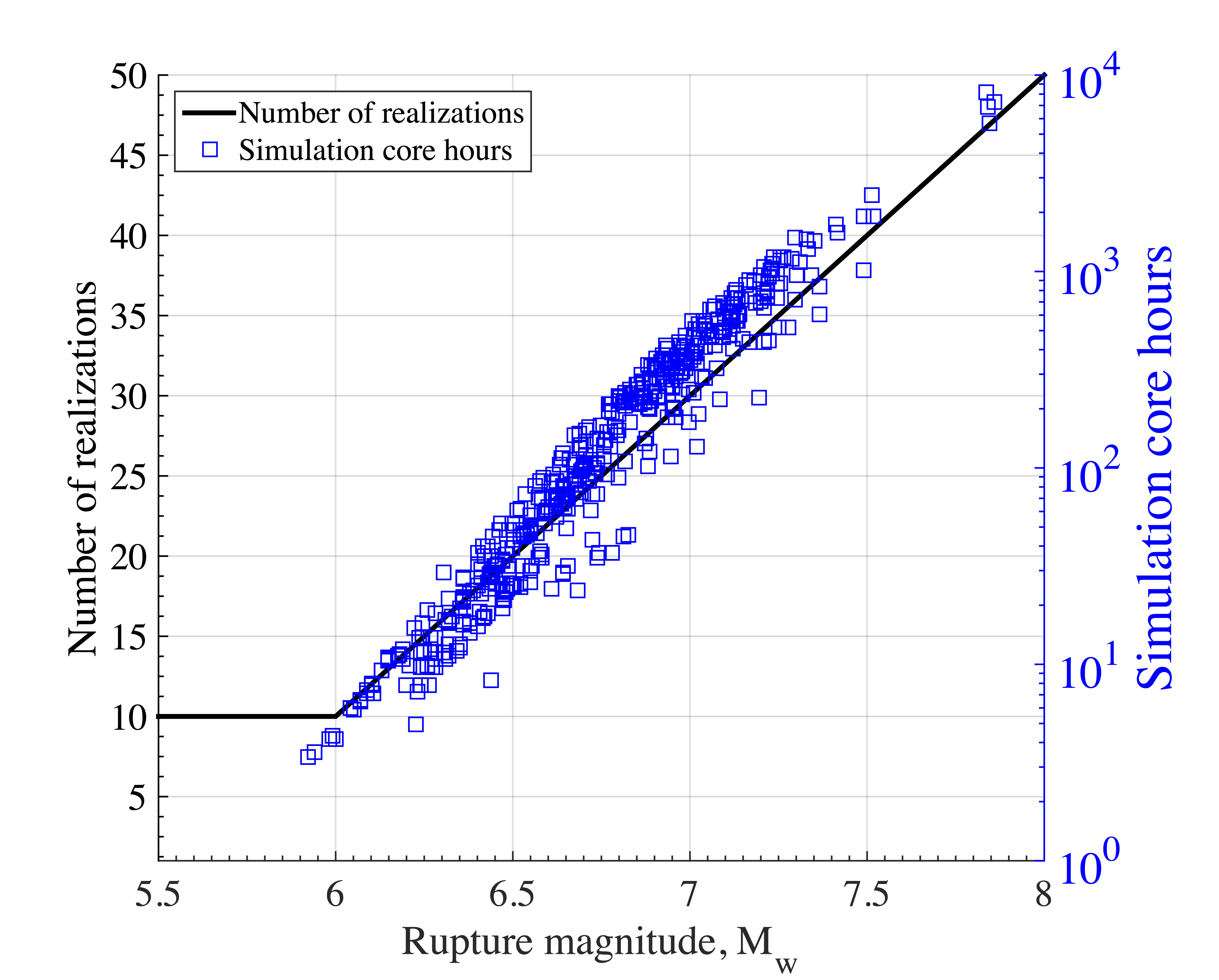 |  | |
|---|
Simulation core hours is the summation of core hours for all realizations of a given source | | |
3. Simulation duration vs magnitude
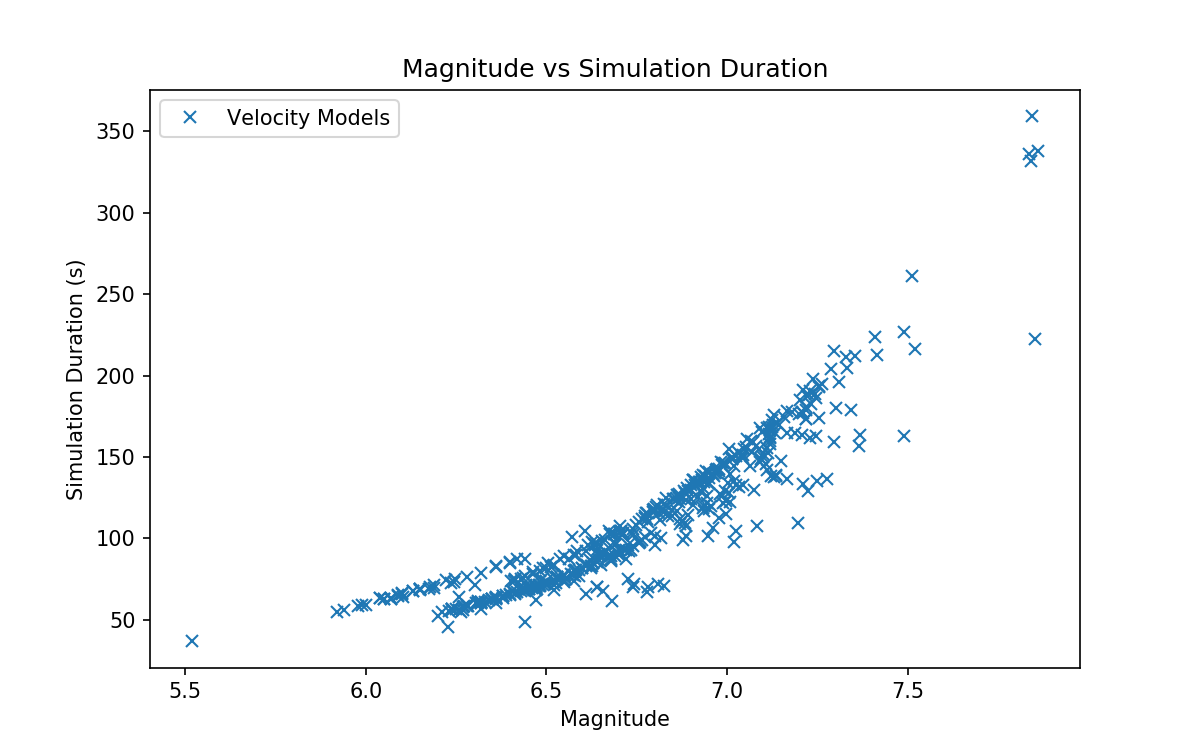
4. Velocity model binary file vs magnitude
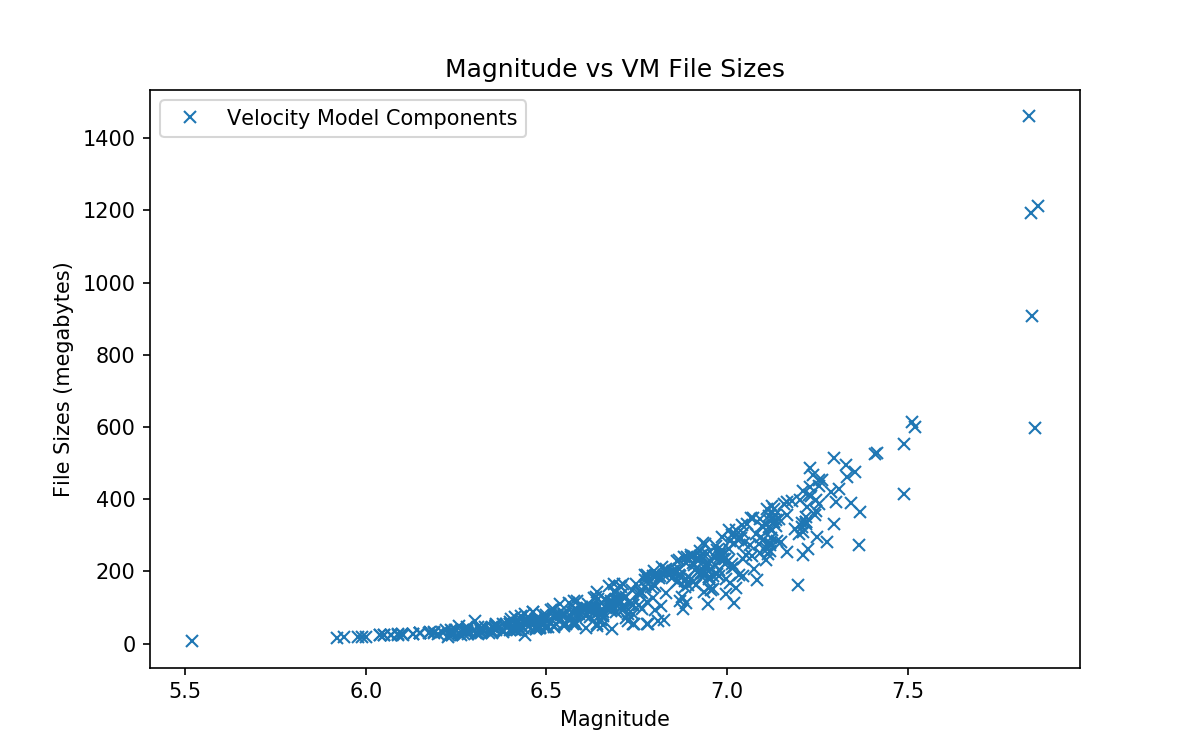
Others
Transition freq and medium grid size within velocity model params
